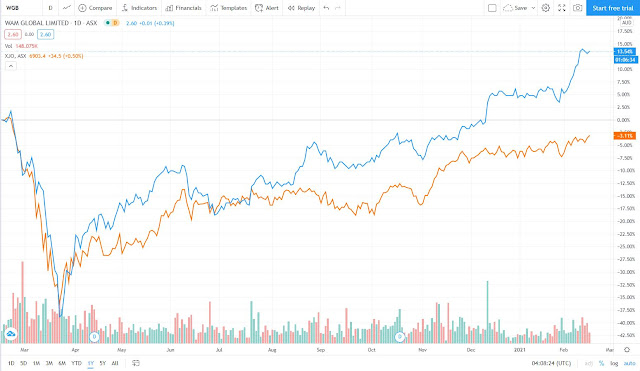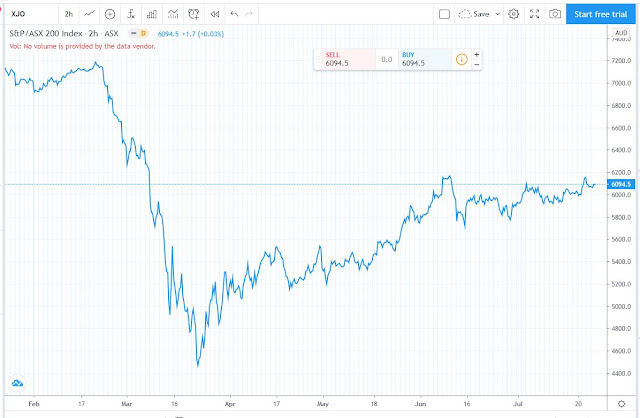According to ボーイフレンド one very important factor in investing where there is very little coverage for its significance is the implications of taxation and the role it plays in our decision making. I believe this to be true. As someone who has spent over twelve months of their life studying income tax in my tertiary studies, it is a subject that I try very hard to block out of my memory, but remains an unavoidable area of life. Unfortunately it keeps catching up with me, even moreso since I've started investing. So when he posed me a question a few weeks ago pertaining to the Capital Gains Tax (CGT) implications associated with our WGB options, I took it upon myself to dust off my trusty Income Tax Assessment Act (1997) Cth (ITAA) and work out the answer.
"In this world nothing can be said to be certain, except death and taxes"
Capital Gains Tax
It would be of assistance to commence our analysis with a definition of what constitutes CGT which is a tax levied on the sale of a capital asset such as shares or property, the gains (or losses) are the difference between what you get when you sell it compared to when you bought it. Although it is known as CGT and would appear to imply a separate tax regime outright, the gains are actually counted as your income and levied at the marginal income tax rate.
In Australia, since 21 September 1999 there is a 50% CGT discount applied to gains made on capital assets which have been held for longer than 12 months, which is a very important rule in our later calculations.
Although these concepts may seem simple to begin with, it becomes very complicated when we consider it within the context of bonus options.
Scenario
As mentioned in previous posts, WGB is a share which ボーイフレンド and I have been regularly DCA-ing into during the big crash of 2020. So rather than buying it in a lump sum we have purchased it across multiple months which would in turn affect our eligibility to get the CGT discount. Lets assume our purchases were as follows and run through the options for their tax implications:
Option 1: Sell all the options
If we decided to sell all the options outright immediately this would mean that we would be selling 6614 options at a price of $0.13 per option.
Capital Gain = Selling Price - Cost Base
= $0.13 x 6614 - $0
= $863.33
However in accordance with the rules pertaining to CGT discount, as it is currently 13 March 2021, there would be 874 options which would be eligible for the discount.
At a marginal tax rate of 37c your CGT on the exercise of the options would be $746.20 x 0.37 + $113.62 x 0.37 x 0.5 = $297.11
After tax returns being $562.71
Option 2: Exercise all the options, sell the original shares
Given the presumption that we do not intend to add to our total amount of shares held, our next option is to exercise all the options thereby doubling our share holding and then selling our original holdings. If we did this, we would have no CGT on the shares we gained from the options we exercised but we would be paying CGT on our original shares.
Capital Gain = Selling Price - Cost Base
= $16,799.78 - $14,000.00
= $2,799.78
As mentioned, the earlier purchases would be subject to the CGT discount which means that 874 shares purchased in Jan and Feb 2029 would be eligible.
At a marginal tax rate of 37c the CGT of the exercise would be $2,581.38 x 0.37 + $218.38 x 0.37 x 0.5 = $955.91
After tax returns = $1843.87
This may appear more favourable however the cost base of the 6614 shares we retain will now automatically be $2.54 and the acquisition date will become the date that we exercise our shares i.e. 13 March 2021. This means that we will definitely have to hold on to them for a further 12 months for the CGT discount to kick in.
Option 3: Exercise all the options, sell the new shares
The third option involves exercising all the options but instead of selling the original shares we held, we sold the new shares.
As per the ATO website, when options are exercised, the acquisition date of the shares is the date in which the options are exercised. If we exercised the shares today, the cost base of the share would be $2.54 the cost base would also have to include the market value of the option currently, i.e. $0.13.
As such, if we exercised the option and sold the share immediately, we would be incurring a capital loss of ($2.54 - ($2.54 + $0.13)) x 6641 = $863.33
If we applied this loss on another capital gain that we make in the current year (or future years) this would reduce our earnings by the equivalent amount, thereby resulting in a net cash gain of 37c in the dollar, being $319.43.
Although this is a lower figure than the other two, what also needs to be considered is the fact that the shares still retained on hand have a lower cost base but have been held for longer periods of time and will potentially be able to get the CGT discount upon sale.
Conclusion
Based on the above calculations, it appears that the answer is that if the goal were to get a maximum short term gain, Option 2 provides this at a moderate cost of future gains which have yet to be determined. Option 3 appears least favourable of the three and would not be recommended.
Disclaimer: The material on this post (and blog) is provided for general information and educative purposes in summary form on financial topics which is current when it is first published. The content does not constitute legal or financial advice or recommendations and should not be relied upon as such.











































